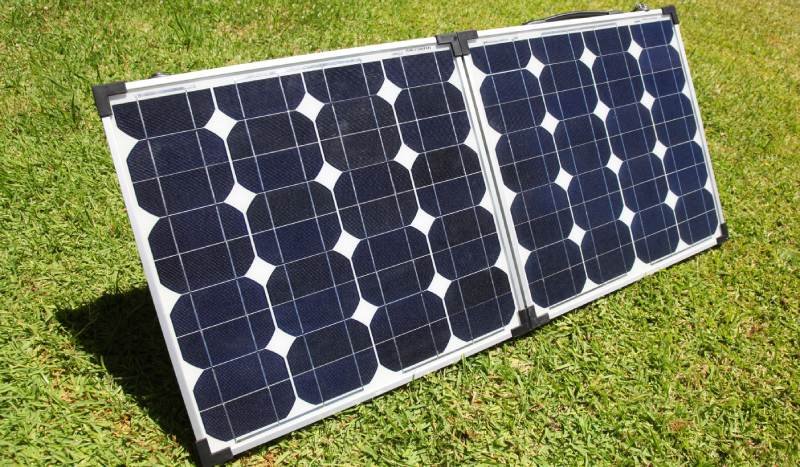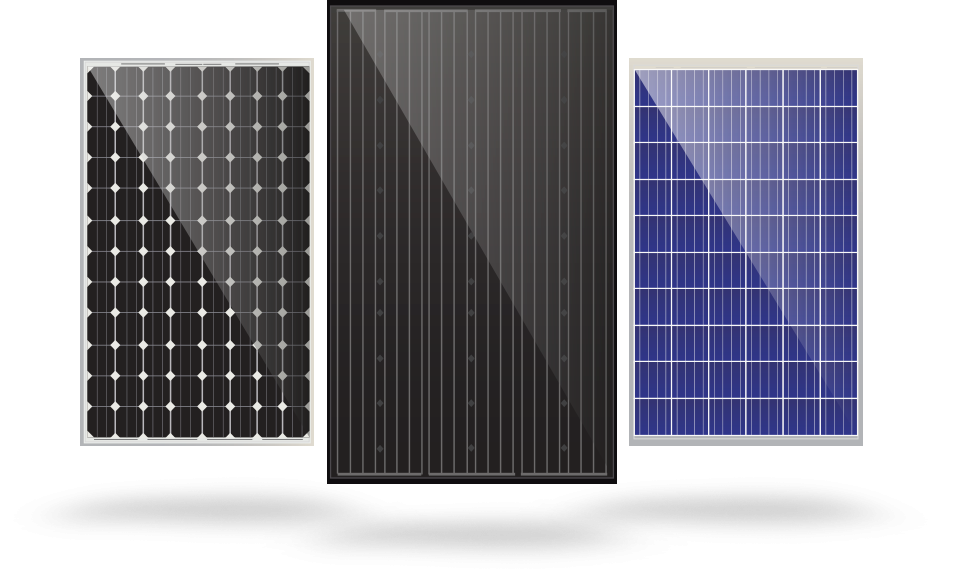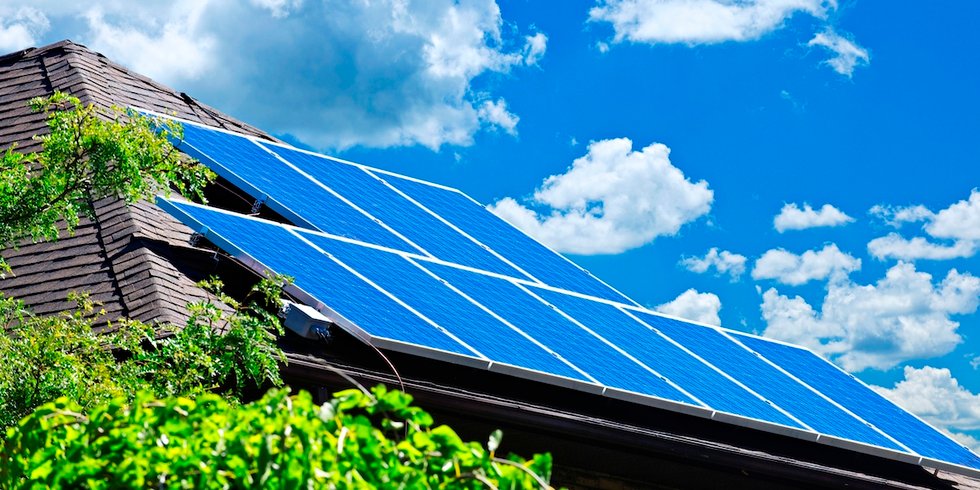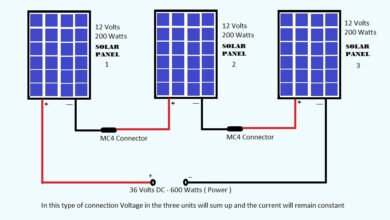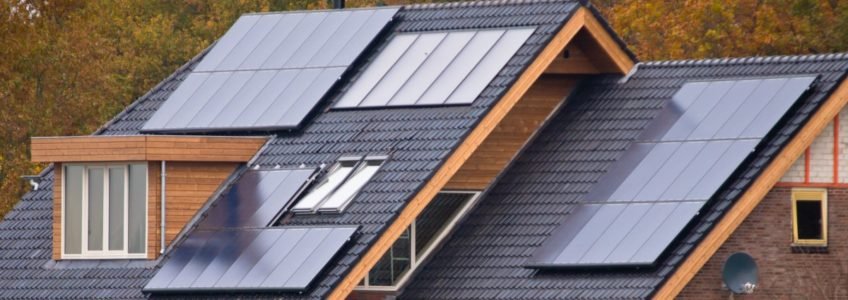
Photovoltaic Solar panel dimensions in cm
There are different sizes of solar panels on the market, here we will talk about the dimensions of the solar panel in cm.
When designing a photovoltaic installation, we must take into account not only its power. The dimensions and weight of the solar panels we use are also important, especially if it is photovoltaic on the roofs of buildings. What are their sizes and how much do PV panels weigh?
Photovoltaic Solar panel dimensions in cm
First, let’s take a look at the dimensions of photovoltaic panels. Among other things, the dimensions depend on the number of links. We distinguish PV panels with 48, 60 and 72 cells, of which the 60-cell version is the most popular in home installations. They have good mechanical properties and are easy to install.
The dimensions of photovoltaic panels themselves have been standardized over the years. For example, one 280 W polycrystalline panel is approximately 100 cm wide and up to 170 cm long. Its thickness is 4 cm.
Standard photovoltaic panel – dimensions (average for polycrystalline panels with 60 cells):
- length: 165-170 cm,
- width: 100-102 cm,
- thickness: 4 cm.
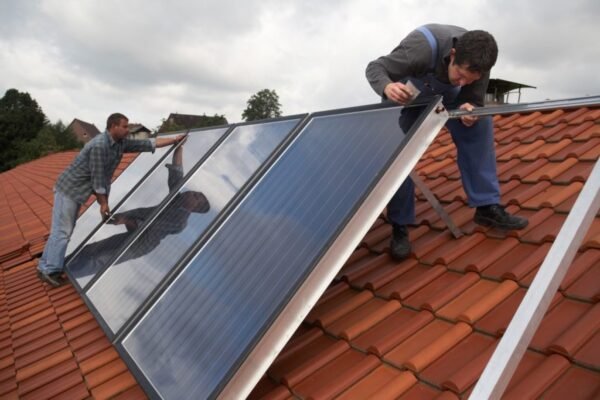
The size of photovoltaic panels – what does it depend on?
The size of photovoltaic panels depends mainly on the number of cells used , which we briefly mentioned above – 40, 60 or 72 cells per panel (average cell dimensions are 15 × 15 cm). However, this does not have a major impact on the difference in the scale of investments, as their efficiency is more important.
Of course, 72-cell panels are bigger and heavier than 60-cell products, e.g .:
- SPR-MAX3-400 model with 60 cells (dimensions: 1690 × 1046 mm, weight: 19 kg);
- BEM 360Wp Prestige Power model with 72 cells (dimensions: 1960 × 992 mm, weight: 21.3 kg).
More important than the dimensions of photovoltaic panels is their efficiency , i.e. the amount of light converted into electricity. The prices of PV panels are also rising proportionally to the increase in efficiency. Hence, we should find the optimum between their efficiency and cost. The power of the photovoltaic installation must meet the demand for electricity, on the other hand, the payback period should be as short as possible, including the calculations obtained from the subsidy for photovoltaics.
The higher the power in a single module, the fewer panels we need to achieve the desired power of the photovoltaic installation. As a result, the PV installation will take up less space, which is important especially for small roofs.
For example, for a 5 kWp installation, we need 15 panels with a capacity of 350 Wp or 17 panels generating 300 Wp. If we assume that our installation must have a power of 3 kWp, it will be 8-9 (350 Wp) or 10 panels (300 Wp) respectively.
In this way, we can choose them optimally in relation to the roof surface of the building, taking into account its slope. We must also remember that on a roof with a slope of 30-35%, on average, 1 kilowatt of power (4 250 Wp panels) requires about 6.5 sq m. surface, on a flat roof and on the ground – even up to 15 sq m. Such a big difference is due to the obligation to install special frames that will allow to achieve the optimal angle of incidence of sunlight.
How much do solar panels weigh?
Another important consideration when creating an installation is the weight generated by the photovoltaic panels. Weight is crucial for safety, especially if it is panels that are mounted on the roof of the house. If we know how much the photovoltaic panel weighs, we can calculate whether the roof’s load-bearing capacity is sufficient or whether it is necessary to install them on the ground.
A standard panel weighs from 18 to 25 kg. Its weight increases with size (for example, the average weight of a 72-cell panel is around 22.5 kg).
In addition, the construction of the photovoltaic panel is important for the weight. The weight of a traditional panel covered with tempered glass on the top and protective foil on the bottom is an average of 18-20 kg. Glass-glass photovoltaic panels are heavier , and they are protected on both sides by toughened glass. Double-glazed panels will be appreciated when covering, among others shelters and terraces. However, if we are the owners of older buildings, apart from the higher price, we must remember about their greater weight – from 3 to 6 kg on one panel.
Installation of photovoltaic panels – on the roof or on the ground?
If we average the weight of the panels to approx. 20 kg, the roof load capacity should be at least 250 kg / sq m. In the case of smaller structures and installations on the roof, recalculation of the weight of the entire structure is necessary.
Therefore, for larger installations with a power above 10 kWp , solar panels are mounted only on the ground , where their weight does not play such an important role. In addition, supporting structures are suitable for installations where the assembly possibilities are limited by the roof structure (e.g. chimneys, roof windows).
They ensure the optimal angle of incidence of sunlight and guarantee the strength and rigidity of the panels. Additionally, these are structures made of aluminum, which prevent the formation of corrosion cells (not to be confused with steel structures).
Another alternative is the installation of panels on a garage or outbuilding, if, of course, we have such a place on our plot. We can also choose facade systems or innovative photovoltaic tiles. However, due to higher costs, only investors who build a house from scratch or carry out a general renovation of the roof decide on such a solution.
In summary, the area and weight of a photovoltaic installation mainly depend on the efficiency of the PV panels used. Along with it, however, their price increases. Therefore, we should find the optimal solution between the cost of installation and the size and weight of the panels, with the help of specialists. Even if the structure or load-bearing capacity of the roof does not allow for the installation of panels of adequate power, they will propose an alternative solution (e.g. supporting structures, ground mounting, panels on a farm building, etc.).

